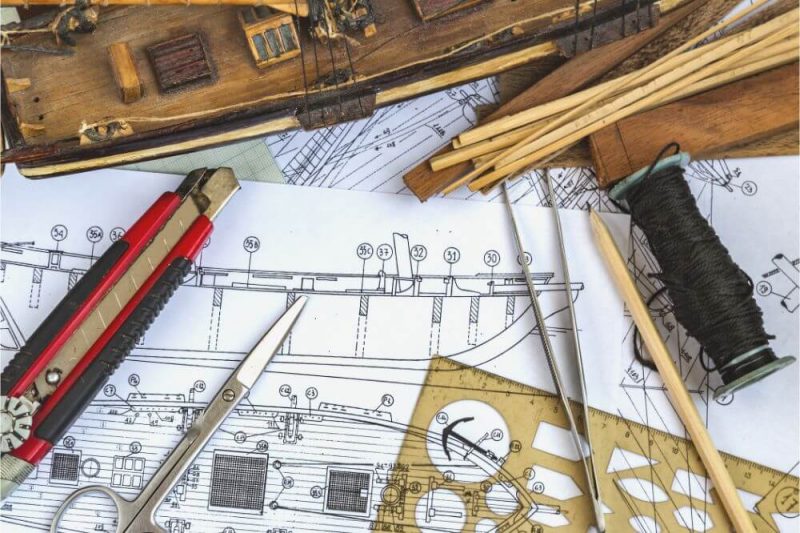How to Waterproof Wood for a Boat
Those who’ve been maintaining their boats for years now know what can happen when wood absorbs too much water. Moisture-ridden wood becomes more prone to breaking and rotting and is rendered practically useless by the liquid element.
For this reason, waterproofing sea vessels made of wood is a must so that it’s able to handle the marine environment better. Aside from discussing all the important reasons to waterproof your wooden boat, we’ll also be going over a simple three-step guide to making your vessel more resistant to water.
Contents
Why Boats Made of Wood Need to Be Sealed
There’s no shortage of information on “waterproofing wood” out there. You’ll even find sources stating how important the process is for boat construction when you check out these helpful tips. Why emphasize the importance of waterproofing for wooden boats, though?
Well, the answer is simple. There’s literally no way to avoid water where boats are. Sea vessels are at the mercy of the sea, exposed to different elements apart from moisture. Those who’ve been boating for some time now know how treacherous the marine environment can get. As such, you need to ensure that your wooden boat is able to withstand the following:
1. The Sun’s Rays
In this case, we’re specifically talking about the sun’s ultraviolet rays, which happen to be just as damaging to wood as it is to human skin. There’s also no way to avoid it when you’re out sailing in the open sea.
A lot of boaters make the mistake of addressing only water and humidity damage and leaving out sunlight damage. This is because the detrimental effects caused by the latter tend to surface at a later time. Despite this, certain preventative care measures need to be put in place to ensure that the boat’s exposed wooden sections don’t sustain too much long-term damage.
2. Humidity
Aside from water, humidity can also be a problem at sea. Moisture in the air can pave the way for decay, causing the wood to rot and metal to corrode. This is an issue boaters have to be particularly careful with because its effects are sustained even when the boat is dry and out of the water.
3. Water
This is obviously the main element you need to protect your wooden boat from. If any of your boat’s main components are made of wood, make sure to seal them off as tightly as you can manage. Remember that exposure to water long-term can lead to decay and damage if your vessel hasn’t been properly sealed.
For the above reasons, using the proper sealant for wood is key. You can’t just purchase any type of sealer, either; it has to be a product that’s made specifically for marine use. Some high-quality sealers in the market provide dual benefits for locking out moisture and preventing decay. Not only are they ideal for wooden boats, but they work great for docks, too.
Waterproofing Your Boat
Once you’ve secured a high-quality sealer for marine use, you can proceed to waterproof the wood in your boat using the following steps:
Step 1: Sanding the Wood
You’ll want to clear out any of the wood’s previous finish using sandpaper. Use both the rough and fine sandpaper types to get the job done correctly. Rough sanding should remove those tricky parts effectively, and smooth sanding should help create a fine, uniformed finish.
Step 2: Applying the Sealer
Apply the sealer according to the instruction label. You may use a paintbrush for an easier and more uniformed application process. If the sealer comes in a kit, then make sure to use its items in the correct order. Next, let the seal dry as necessary.
Step 3: Give the Wood Enough Curing Time
While most high-quality wood sealants offer quick drying times, that’s not something you can go by when humidity and moisture issues stand in the way. Give the sealant enough time to dry properly so that the next time your boat’s wood touches the water, it’ll be completely sealed off from moisture.
As effective as these steps are for sealing wood, don’t forget to conduct periodic inspections on the material to check for signs of waterlogging or decay. Carefully assess the wood’s surface and reapply the sealer if necessary. This should prevent the wood from absorbing too much water while keeping ultraviolet rays and humidity at bay at the same time.
Do this correctly, and you should be able to save a lot of money on repairs and replacements over the course of your boat’s lifetime.
The Bottomline
If you’re a proud owner of a wooden boat, then you would do anything to maintain it’s classic elegance and overall functionality. This goal will simply call for proper waterproofing of your vessel’s wooden parts, which is simple enough to accomplish with a high-quality marine sealant and the above steps for waterproofing your boat.




